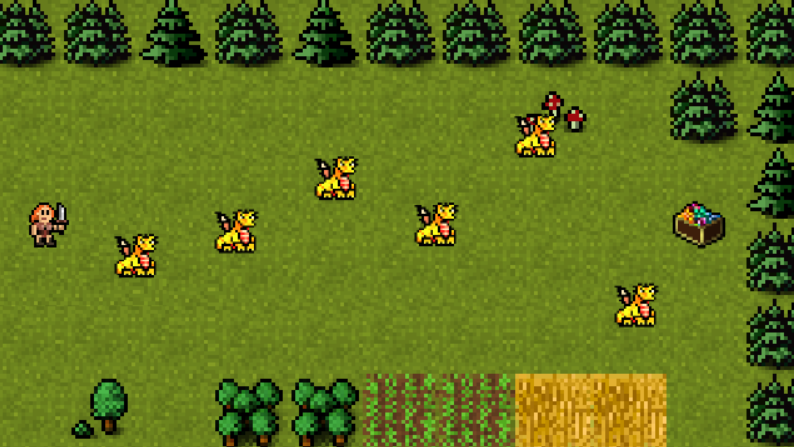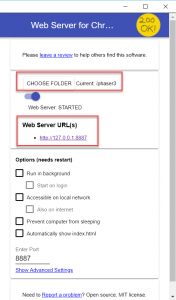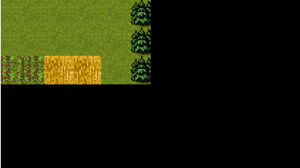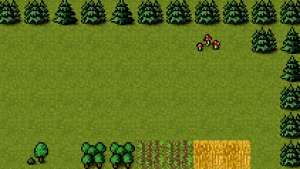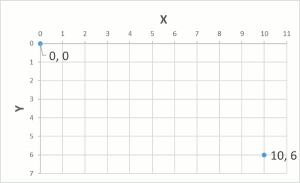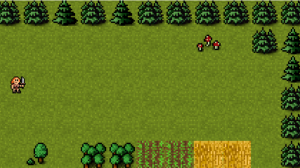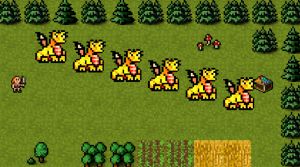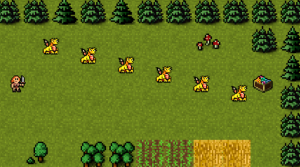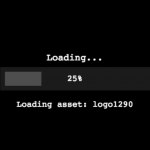Making amazing cross-platform games is now easier than it’s ever been thanks to Phaser, an Open Source JavaScript game development library developed by Richard Davey and his team at Photonstorm. Games developed with Phaser can be played on any (modern) web browser, and can also be turned into native phone apps by using tools such as Cordova.
Table of contents
Learn by making your first game
The goal of this tutorial is to teach you the basics of this fantastic framework (version 3.x) by developing the “Frogger” type of game you see below:
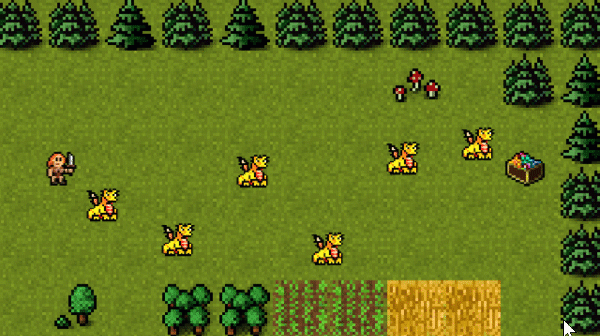
You can download the game and code here. All the assets included were produced by our team and you can use them in your own creations.
Learning goals
- Learn to build simple games in Phaser 3
- Work with sprites and their transforms
- Main methods of a Phaser scene
- Utilize groups to aggregate sprite behavior
- Basic camera effects (new Phaser 3 feature)
Tutorial requirements
- Basic to intermediate JavaScript skills
- Code editor
- Web browser
- Local web server
- Tutorial assets to follow along
- No prior game development experience is required to follow along
Learn Phaser 3 with our newest Mini-Degree
The Phaser Mini-Degree is now available on Zenva Academy. Learn to code and make impressive games with JavaScript and Phaser 3!
Development environment
The minimum development environment you need consists in a code editor, a web browser and a local web server. The first two are trivial, but the latter requires a bit more explanation. Why is it that we need a local web server?
When you load a normal website, it is common that the content of the page is loaded before the images, right? Well, imagine if that happened in a game. It would indeed look terrible if the game loads but the player image is not ready.
Phaser needs to first preload all the images / assets before the game begins. This means, the game will need to access files after the page has been loaded. This brings us to the need of a web server.
Browsers, by default, don’t let websites just access files from your local drive. If they did, the web would be a very dangerous place! If you double click on the index.html file of a Phaser game, you’ll see that your browser prevents the game from loading the assets.
That’s why we need a web server to server the files. A web server is a program that handles HTTP requests and responses. Luckily for us, there are multiple free and easy to setup local web server alternatives!
Setting up your local web server
The simplest solution I’ve found is a Chrome application named (surprisingly) Web Server for Chrome. Once you install this application, you can launch if from Chrome directly, and load your project folder.
You’ll be able to navigate to this folder by typing the web server URL into your browser.
Hello World Phaser 3
Now that our web server is up and running, lets make sure we’ve got Phaser running on our end. You can find the Phaser library here. There are different manners of obtaining and including Phaser in your projects, but to keep things simple we’ll be using the CDN alternative. I’d recommend you use the non-minified file for development – that will make your life easier when debugging your game.
More advanced developers might want to divert from these instructions and use a more sophisticated development environment setup and workflow. Covering those is outside of the scope of this tutorial, but you can find a great starting point here, which uses Webpack and Babel.
In our project folder, create a index.html file with the following contents:
<!doctype html>
<html lang="en">
<head>
<meta charset="UTF-8" />
<title>Learn Game Development at Zenva.com</title>
<script src="//cdn.jsdelivr.net/npm/[email protected]/dist/phaser.js"></script>
</head>
<body>
<script src="js/game.js"></script>
</body>
</html>
Now create a folder named js, and inside of it, our game file game.js:
// create a new scene named "Game"
let gameScene = new Phaser.Scene('Game');
// our game's configuration
let config = {
type: Phaser.AUTO, //Phaser will decide how to render our game (WebGL or Canvas)
width: 640, // game width
height: 360, // game height
scene: gameScene // our newly created scene
};
// create the game, and pass it the configuration
let game = new Phaser.Game(config);What we are doing here:
- We are creating a new scene. Think of scenes as compartments where the game action takes place. A game can have multiple scenes, and in Phaser 3 a game can even have multiple open scenes at the same time (check out this example)
- It’s necessary to tell our game what the dimensions in pixels will be. Important to mention this is the size of the viewable area. The game environment itself has no set size (like it used to have in Phaser 2 with the “game world” object, which doesn’t exist on Phaser 3).
- A Phaser game can utilize different rendering systems. Modern browsers have support for WebGL, which in simple terms consists in “using your graphic card to render page content for better performance”. The Canvas API is present in more browsers. By setting the rendering option to “AUTO”, we are telling Phaser to use WebGL if available, and if not, use Canvas.
- Lastly, we create our actual game object.
If you run this on the browser and open the console you should see a message indicating that Phaser is up and running:
Scene life-cycle
In order for us to add the first images to our game, we’ll need to develop a basic understanding of the Scene life-cycle:
- When a scene starts, the init method is called. This is where you can setup parameters for your scene or game.
- What comes next is the preloading phaser (preload method). As explained previously, Phaser loads images and assets into memory before launching the actual game. A great feature of this framework is that if you load the same scene twice, the assets will be loaded from a cache, so it will be faster.
- Upon completion of the preloading phase, the create method is executed. This one-time execution gives you a good place to create the main entities for your game (player, enemies, etc).
- While the scene is running (not paused), the update method is executed multiple times per second (the game will aim for 60. On less-performing hardware like low-range Android, it might be less). This is an important place for us to use as well.
There are more methods in the scene life-cycle (render, shutdown, destroy), but we won’t be using them in this tutorial.
Bring in the sprites!
Let’s dive right into it and show our first sprite, the game background, on the screen. The assets for this tutorial can be downloaded here. Place the images in a folder named “assets”. The following code goes after let gameScene = new Phaser.Scene(‘Game’); :
// load asset files for our game
gameScene.preload = function() {
// load images
this.load.image('background', 'assets/background.png');
};
// executed once, after assets were loaded
gameScene.create = function() {
// background
this.add.sprite(0, 0, 'background');
}
- Our game background image “background.png” is loaded. We are giving this asset the label “background”. This is an arbitrary value, you could call it anything you want.
- When all images are loaded, a sprite is created. The sprite is placed in x = 0, y = 0. The asset used by this sprite is that with label “background”.
Let’s see the result:
Not quite what we wanted right? After all, the full background image looks like so:
Before solving this issue let’s first go over how coordinates are set in Phaser.
Coordinates
The origin (0,0) in Phaser is the top left corner of the screen. The x axis is positive to the right, and y axis is positive downwards:
Sprites by default have their origin point in the center, box on x and y. This is an important difference with Phaser 2, where sprites had what was called an anchor point on the top-left corner.
This means, when we positioned our background on (0,0), we actually told Phaser: place the center of the sprite at (0,0). Hence, the result we obtained.
To place the top-left corner of our sprite on the top-left corner of the screen we can change the origin of the sprite, to be it’s top-left corner:
// executed once, after assets were loaded
gameScene.create = function() {
// background
let bg = this.add.sprite(0, 0, 'background');
// change origin to the top-left of the sprite
bg.setOrigin(0,0);
};The background will now render in the position we want it to be:
The Player
Time to create a simple player we can control by either clicking or touching on the game. Since we’ll be adding more sprites, let’s add these to preload so we don’t have to modify it again later:
// load asset files for our game
gameScene.preload = function() {
// load images
this.load.image('background', 'assets/background.png');
this.load.image('player', 'assets/player.png');
this.load.image('dragon', 'assets/dragon.png');
this.load.image('treasure', 'assets/treasure.png');
};We’ll then add the player sprite and reduce it’s size by 50%, inside of create:
// player this.player = this.add.sprite(40, this.sys.game.config.height / 2, 'player'); // scale down this.player.setScale(0.5);
- We are placing our sprite at x = 40. For y, we are placing it in the middle of the game viewport. this gives us access to our current scene object, this.sys.game gives us access to the global game object. this.sys.game.config gives us the configuration we defined when initiating our game.
- Notice we are saving our player to the current scene object (this.player). This will allow us to access this variable from other methods in our scene.
- To scale down our player we using the setScale method, which applies in this case a scale of 0.5 to both x and y (you could also access the scaleX and scaleY sprite properties directly).
Our Valkyrie is ready for some action! We need to develop next the ability for us to move her with the mouse or touchscreen.
Detecting input
Phaser 3 provides many ways to work with user input and events. In this particular game we won’t be using events but will just check that the “active input” (be default, the mouse left button or the touch) is on.
If the player is pressing/touching anywhere on the game, our Valkyrie will walk forward.
To check for input in this manner we’ll need to add an update method to our scene object, which will normally be called 60 times per second (it is based on the requestAnimationFrame method, in less performing devices it will be called less often so don’t assume 60 in your game logic):
// executed on every frame (60 times per second)
gameScene.update = function() {
// check for active input
if (this.input.activePointer.isDown) {
// player walks
}
};You can verify that this works by placing a console.log entry in there.
- this.input gives us access to the input object for the scene. Different scenes have their own input object and can have different input settings.
- This code will be true whenever the user presses the left button (clicks on the game area) or touches the screen.
Moving the player
When the input is active we’ll increase the X position of the player:
// check for active input
if (this.input.activePointer.isDown) {
// player walks
this.player.x += this.playerSpeed;
}this.playerSpeed is a parameter we haven’t declared yet. The place to do it will be the init method, which is called before the preload method. Add the following before the preload definition (the actual declaration order doesn’t matter, but it will make our code more clear). We are adding other parameters as well which we’ll use later:
// some parameters for our scene (our own customer variables - these are NOT part of the Phaser API)
gameScene.init = function() {
this.playerSpeed = 1.5;
this.enemyMaxY = 280;
this.enemyMinY = 80;
}Now we can control our player and move it all the way to the end of the visible area!
Treasure hunt
What good is a game without a clear goal (take that Minecraft!). Let’s add a treasure chest at the end of the level. When the player position overlaps with that of the treasure, we’ll restart the scene.
Since we already preloaded all assets, jump straight to the sprite creation part. Notice how we position the chest in X: 80 pixels to the left of the edge of the screen:
// goal this.treasure = this.add.sprite(this.sys.game.config.width - 80, this.sys.game.config.height / 2, 'treasure'); this.treasure.setScale(0.6);
In this tutorial we are not using a physics system such as Arcade (which comes with Phaser). Instead, we are checking collision by using a utility method that comes in Phaser, which allows us to determine whether two rectangles are overlapping.
We’ll place this check in update, as it’s something we want to be testing for at all times:
// treasure collision
if (Phaser.Geom.Intersects.RectangleToRectangle(this.player.getBounds(), this.treasure.getBounds())) {
this.gameOver();
}- The getBounds method of a sprite gives us the rectangle coordinates in the right format.
- Phaser.Geom.Intersects.RectangleToRectangle will return true if both rectangles passed overlap
Let’s declare our gameOver method (this is our own method, you can call it however you want – it’s not part of the API!). What we do in this method is restart the scene, so you can play again:
// end the game
gameScene.gameOver = function() {
// restart the scene
this.scene.restart();
}A group of dragons
Life is not easy and if our Valkyrie wants her gold, she’ll have to fight for it. What better enemies than evil yellow dragons!
What we’ll do next is create a group of moving dragons. Our enemies will have a back and forth movement – the sort of thing you’d expect to see on a Frogger clone :)
In Phaser, a group is an object that allows you to create and work with multiple sprites at the same time. Let’s start by creating our enemies in, yes, create:
// group of enemies
this.enemies = this.add.group({
key: 'dragon',
repeat: 5,
setXY: {
x: 110,
y: 100,
stepX: 80,
stepY: 20
}
});- We are creating 5 (repeat property), sprites using the asset with label dragon.
- The first one is placed at (110, 100).
- From that first point, we move 80 on x (stepX) and 20 on Y (stepY), for every additional sprite.
- For future reference, the members of a group are called “children”.
The dragons are too big. Let’s scale them down:
// scale enemies Phaser.Actions.ScaleXY(this.enemies.getChildren(), -0.5, -0.5);
- Phaser.Actions.ScaleXY is a utility that reduces the scale by 0.5, to all the sprites that are passed in.
- getChildren gets us an array with all the sprites that belong to a group
This is looking better:
Bouncing enemies
The up and down movement of the dragons will follow the logic described below. When making games and implementing mechanics, it is in my opinion always good to outline them and understand them well before attempting implementation:
- Enemies have a speed, a maximum and a minimum vale of Y they will reach (we already have all of this declared in init).
- We want to increase the position of an enemy until it reaches the maximum value
- Then, we want to reverse the movement, until the minimum value is reached
- When the minimum value is reached, go back up..
Since we have basically an array of enemies, we’ll iterate through this array, in update, and apply this movement logic to each enemy (note: speed hasn’t been declared yet, so assume each enemy has a value setup for this property):
// enemy movement
let enemies = this.enemies.getChildren();
let numEnemies = enemies.length;
for (let i = 0; i < numEnemies; i++) {
// move enemies
enemies[i].y += enemies[i].speed;
// reverse movement if reached the edges
if (enemies[i].y >= this.enemyMaxY && enemies[i].speed > 0) {
enemies[i].speed *= -1;
} else if (enemies[i].y <= this.enemyMinY && enemies[i].speed < 0) {
enemies[i].speed *= -1;
}
}This code will make the dragons move up and down, provided speed was set. Let’s take care of that now. In create, after scaling our dragons, let’s give each a random velocity between 1 and 2:
// set speeds
Phaser.Actions.Call(this.enemies.getChildren(), function(enemy) {
enemy.speed = Math.random() * 2 + 1;
}, this);- Phaser.Actions.Call allows us to call a method on each array element. We are passing this as the context (although not using it).
Now our up and down movement is complete!
Colliding with enemies
We’ll implement this using the same approach we took for the treasure chest. The collision check will be performed for each enemy. It makes sense to utilize the same for loop we’ve already created:
// enemy movement and collision
let enemies = this.enemies.getChildren();
let numEnemies = enemies.length;
for (let i = 0; i < numEnemies; i++) {
// move enemies
enemies[i].y += enemies[i].speed;
// reverse movement if reached the edges
if (enemies[i].y >= this.enemyMaxY && enemies[i].speed > 0) {
enemies[i].speed *= -1;
} else if (enemies[i].y <= this.enemyMinY && enemies[i].speed < 0) {
enemies[i].speed *= -1;
}
// enemy collision
if (Phaser.Geom.Intersects.RectangleToRectangle(this.player.getBounds(), enemies[i].getBounds())) {
this.gameOver();
break;
}
}Camera shake effect
A really cool feature of Phaser 3 is that of camera effects. Our game is playable but it will be nicer if we can add some sort of camera shake effect. Let’s replace gameOver by:
gameScene.gameOver = function() {
// shake the camera
this.cameras.main.shake(500);
// restart game
this.time.delayedCall(500, function() {
this.scene.restart();
}, [], this);
}- The camera will be shaken for 500 miliseconds
- After 500 ms we are restarting the scene by using this.time.delayCall, which allows you to execute a method after some time
There is a problem with this implementation, can you guess what it i?
After colliding with an enemy, the gameOver method will be called many times during the 500 ms. We need some sort of switch so that when you run into a dragon, the gameplay freezes.
Add the following at the end of create:
// player is alive this.isPlayerAlive = true;
The code below goes at the very start of update, so that we only process it if the player is alive:
// only if the player is alive
if (!this.isPlayerAlive) {
return;
}Our gameOver method:
gameScene.gameOver = function() {
// flag to set player is dead
this.isPlayerAlive = false;
// shake the camera
this.cameras.main.shake(500);
// restart game
this.time.delayedCall(500, function() {
this.scene.restart();
}, [], this);
};Now the method won’t be activated many times in a row.
Fading out
Before saying goodbye we’ll add a fadeout effect, which will commence half-way through the camera shakeup:
gameScene.gameOver = function() {
// flag to set player is dead
this.isPlayerAlive = false;
// shake the camera
this.cameras.main.shake(500);
// fade camera
this.time.delayedCall(250, function() {
this.cameras.main.fade(250);
}, [], this);
// restart game
this.time.delayedCall(500, function() {
this.scene.restart();
}, [], this);
};- At time 250 ms we are starting our fade out effect, which will last for 250 ms.
- This effect will leave the game black, even after restarting our scene, so we do need to call this.cameras.main.resetFX(); to go back to normal, for that, add this to the bottom of the create method, or the screen will remain black after you restart the scene:
// reset camera effects this.cameras.main.resetFX();
That’s all for this tutorial! Hope you’ve found this resource helpful.

